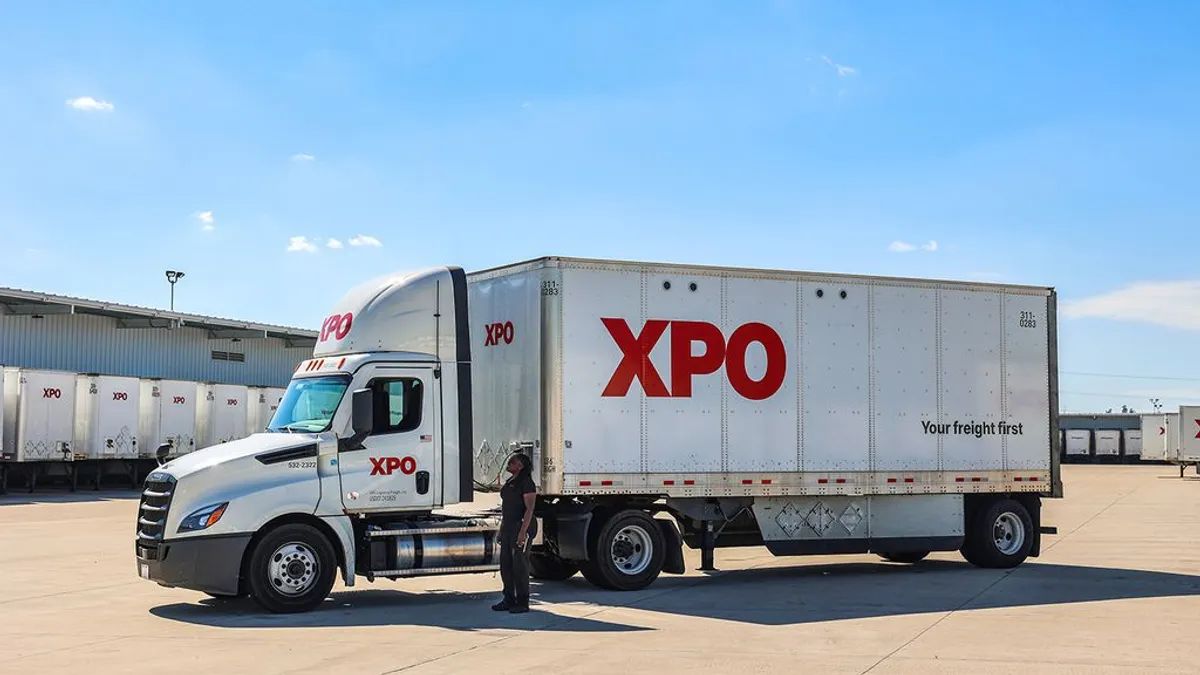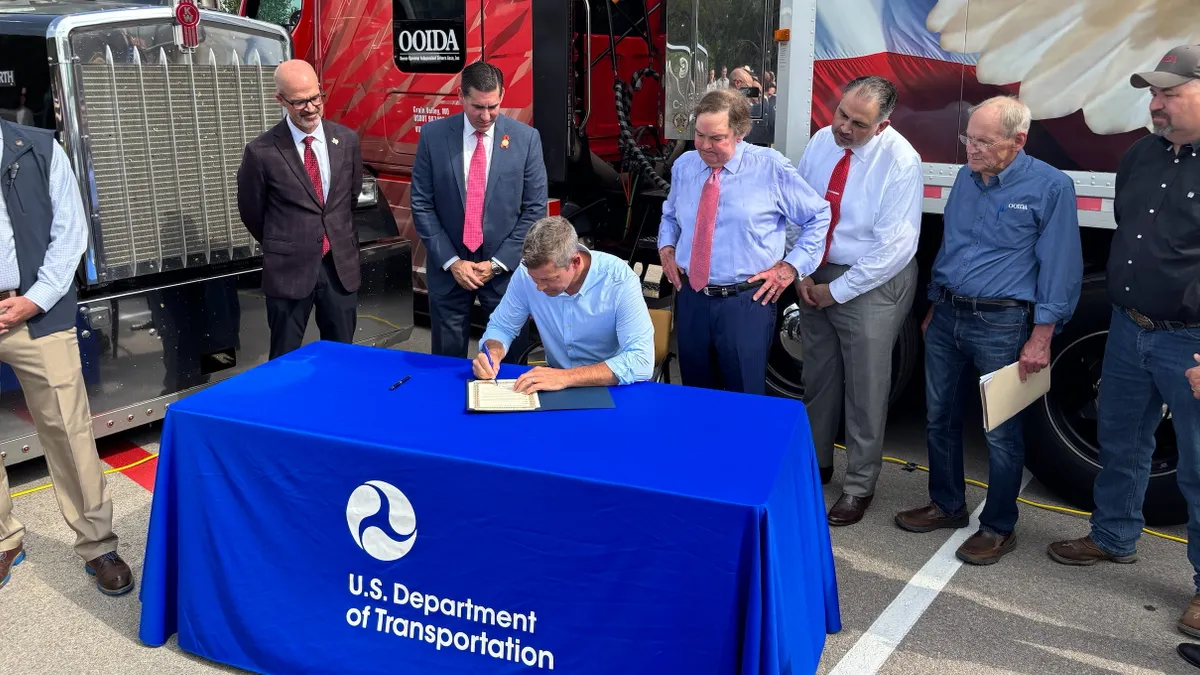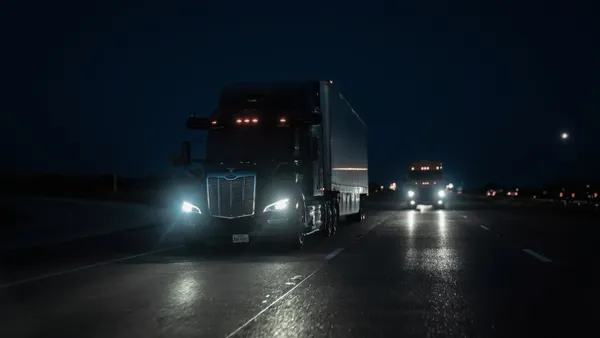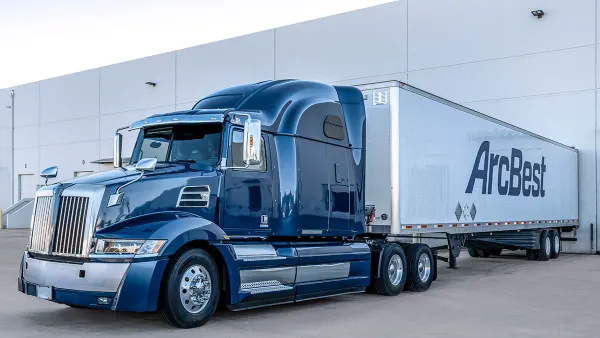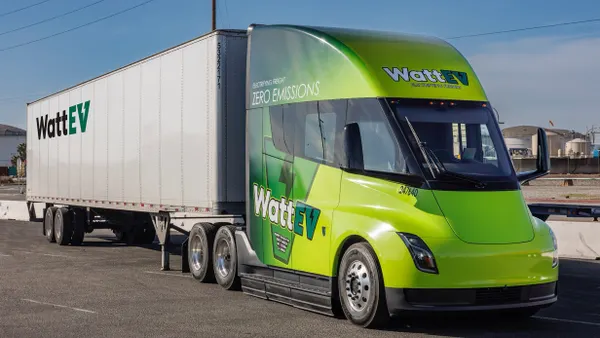This is a contributed op-ed written by Christopher Thornycroft, senior vice president of carrier operations of Redwood Logistics. Opinions are the author's own.
A decade ago, robotic trucks and vehicles seemed like a distant sci-fi concept. But in 2021, self-driving tractor-trailers log hundreds, if not thousands, of miles every day in real-world, on-highway testing.
It's clear that it's a matter of "when," not "if," autonomous trucks will become regular tenants on our nation's roadways. The technology is advancing rapidly. Some of the smartest engineers of our time, most backed either by tech giants like Google or stacks of venture capital cash, are racing to develop rigs that can operate with limited human intervention.
While they won't solve near-term supply chain issues, autonomous vehicles will help address the long-term productivity issues we can already see coming. Other countries will embrace the technology. So, the U.S. logistics industry can either become the leader in this realm — or it can get left behind.
Addressing the driver shortage
We're in the midst of a severe trucking capacity shortage across all segments that is wreaking havoc on vital supply chains. Unlike capacity crunches of yesteryear, this one has translated into goods shortages that consumers see and feel on a daily basis.
Trucking fleets point to a shortage of available drivers as a key reason for the capacity shortage, and prominent trucking organizations estimate the deficit of available truckers will only grow wider over the coming decade.
That means there's an important premise we must all accept: Autonomous trucking is coming, and it'll be one of the many arrows in the quiver the logistics industry uses to combat capacity crises like the one we've seen mount over the past 18 months. It's a logical solution to a problem — available trucking capacity — that we as a transportation industry are actively battling every single day.
But do I think autonomous trucking will be an overnight revolution that suddenly strips millions of drivers of their jobs and provides shippers and brokers with access to endless capacity unbound by hours of service regulations and driver turnover?
Automation will be a tool we use to expand the driver workforce, not shrink it.

Not hardly. I argue the opposite.
The trend toward automation over the next few decades won't displace drivers — it will make their jobs easier and safer. And it ultimately will make the job more attractive for the next generation of truck drivers. Automation will be a tool we use to expand the driver workforce, not shrink it.
Human-aided technology truly is the future of transportation. In an industry struggling to move necessary goods like food, gas, water, clothes and gifts for the holidays because of a lingering shortage of drivers, human-aided technology is a vital component of solving these supply chain dams on a long-term basis.
But the trend toward autonomous vehicles obviously isn't isolated to the U.S.
Worldwide competition
Tech developers and truck manufacturers alike are working steadily to bring autonomous trucking to highways in Europe and in Asia. After that, South America and parts of Africa. There's also frequent testing ongoing in Australia.
If we're not careful, our global competitors' economies will roar past us in a fleet of automated vehicles. And they'll be the ones reaping the benefits thereof, rather than our economy, our workers, our businesses and consumers.
Look at the advancements being made in China, where development is being heavily supported by public policy and subsidized by government spending. Two recent examples show how the technology is rapidly advancing across highways within our largest economic rival.
In August, California-based Plus performed a successful Level 4 autonomous test, with no human intervention at all, in real-world conditions on the Wufengshan highway in China's Yangtze Delta region. The run included handling obstacles like road debris and car accidents blocking the highway, as well as managing an interchange. Separately, TuSimple, which is actively testing trucks in the U.S., deployed 5,000 autonomous trucks for testing in China this year.
That's not to take away from the innovation we've seen in the U.S. We've had startups come and go over the past half-decade with various levels and flavors of autonomous trucks.
Freightliner made a big splash in 2015 when it operated a semi-autonomous truck on I-15 in Las Vegas. And there is a fairly keen interest by domestic trucking fleets in adopting and utilizing this technology both near-term and long-term.
While we're not making a point in the U.S. to cede ground in the self-driving arena to our Chinese counterparts, we must understand they're steadily proceeding to implement this game-changing technology into their economy.
To look forward into the future of autonomous trucks at home, we must first look back and heed lessons from past revolutionary tech.
Like the Model T
Think back to the first mass-marketed car in the U.S.: Ford's Model T. What would have happened if our predecessors at the turn of the 20th century stuck with the horse and buggy and failed to embrace the automobile?
It's not a stretch to say that if they hadn't seen the potential of the Model T and the automobile a hundred years ago, the U.S. may have never emerged as a global industrial superpower.
You can make the same argument about the transcontinental railroad a half-century before that. If we as a nation and society hadn't embraced it and invested in it, what would have become our fledgling nation?
More recently, there's a case study for the reverse, of not embracing change and seeing the benefits thereof. In the 1980s and 1990s, special interests groups successfully blocked adoption of so-called longer combination vehicles. Utilizing those longer tractor-trailers could have allowed freight to move more efficiently in fewer trucks.
That could have meant less tailpipe emissions from big rigs, less crowded highways, and a less severe driver shortage. But we caved to special interests and their fear mongering.
With autonomous trucks, we can't repeat this mistake. We must look past the fear and the special interests' doomsday scenarios and focus on the competitive positioning of our nation's economy.
To submit an opinion piece for publication on the Transport Dive website, please visit https://www.transportdive.com/opinion/submit-opinion/ and view our guidelines and submission form.



